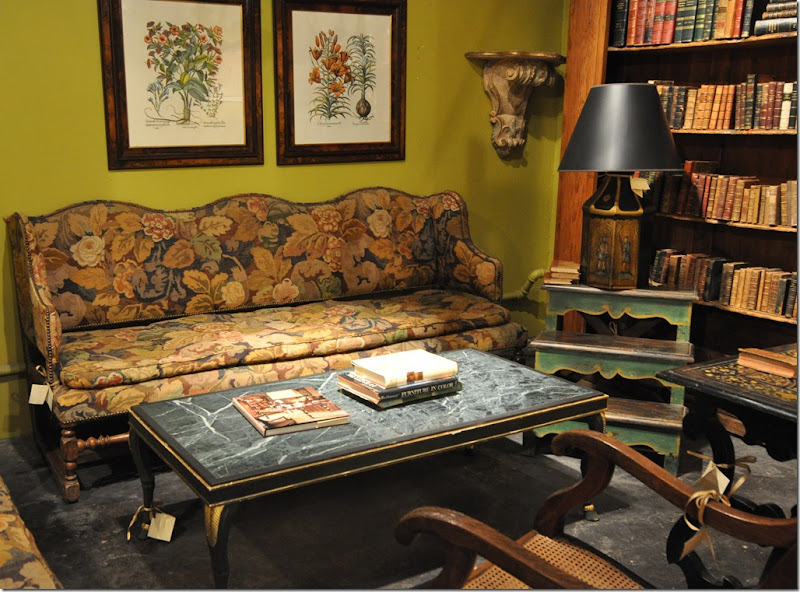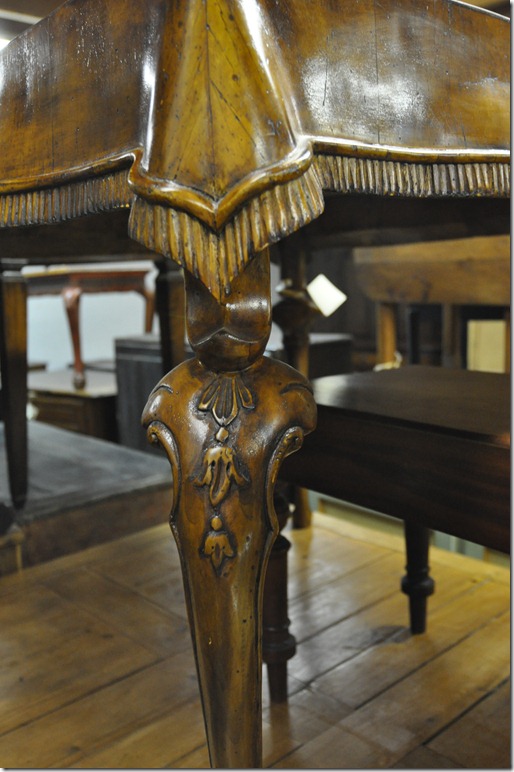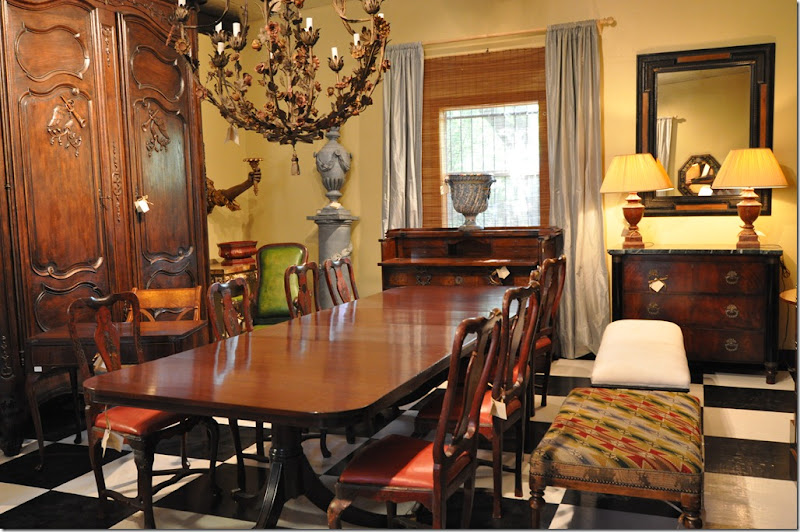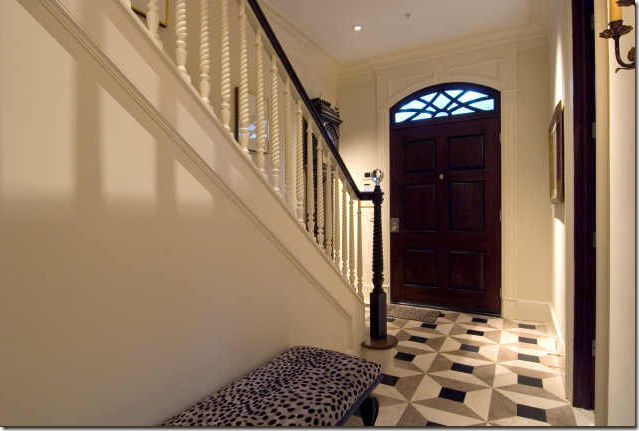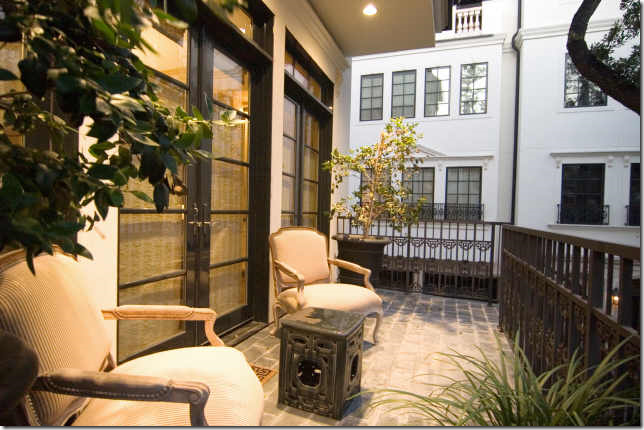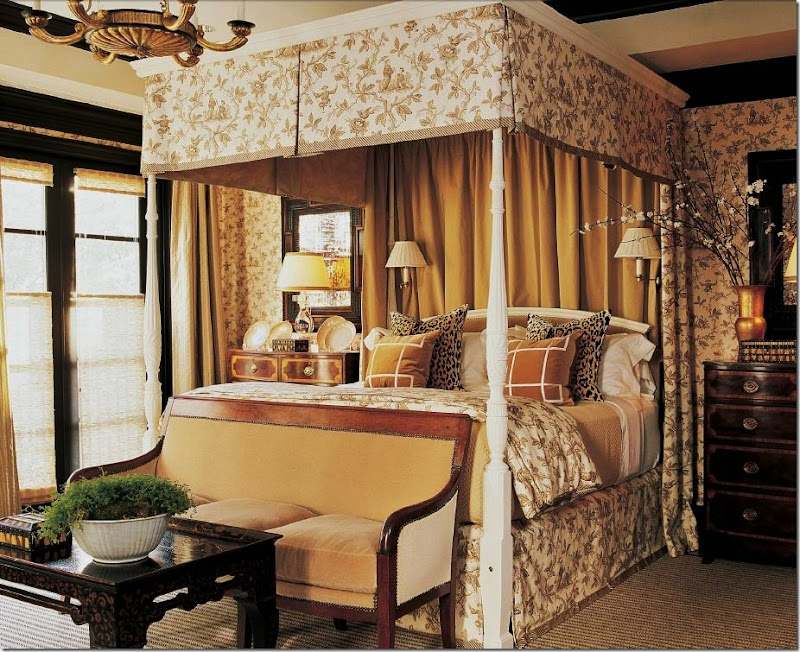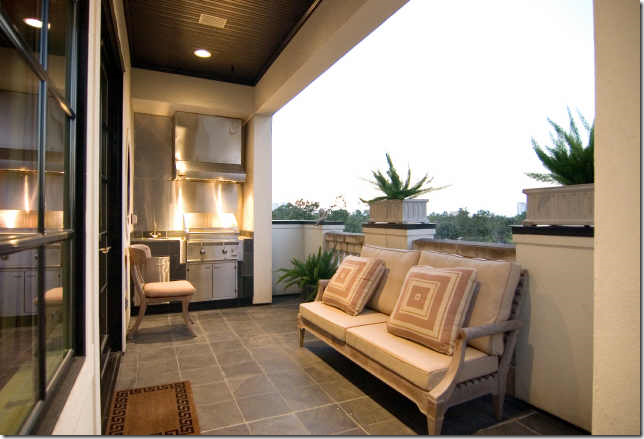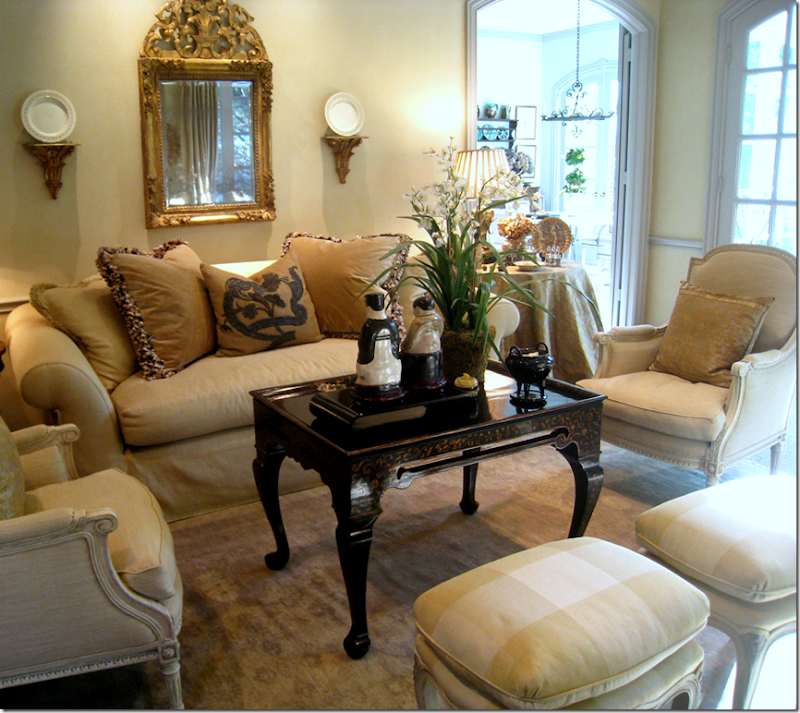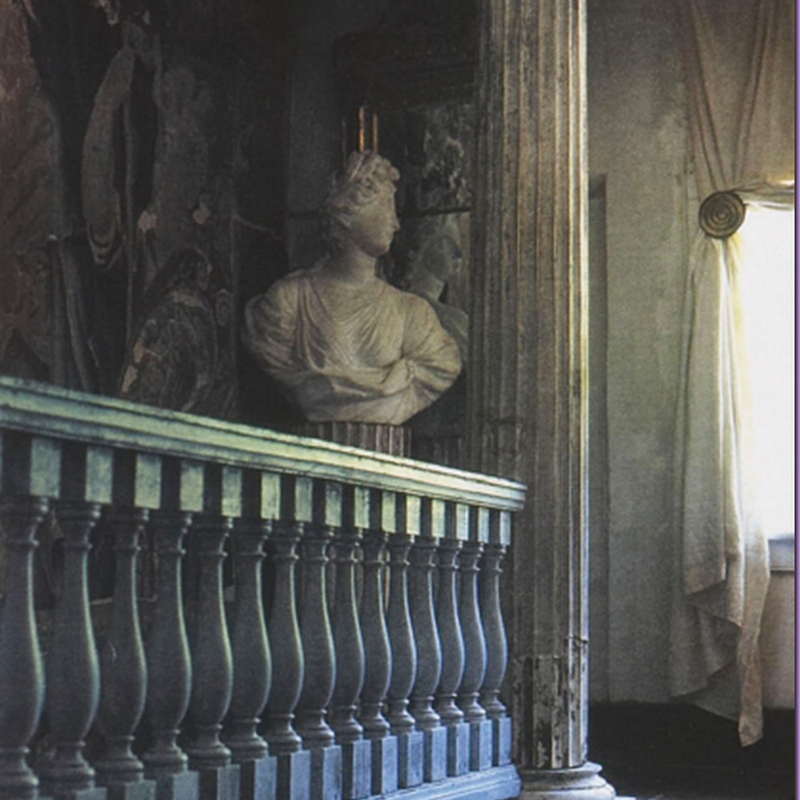 Brian Stringer Antiques – the adorable French House. Houstonians know not to enter through this door – rather they go around to the side door.
Brian Stringer Antiques – the adorable French House. Houstonians know not to enter through this door – rather they go around to the side door.
One of Houston’s best known and oldest antique store is closing shop, and it’s a very sad day. Upon hearing the news, I stopped by Brian Stringer Antiques the other day to talk with Brian and his charming wife Kathy and find out why they were shutting their doors. Walking
around their wonderful shop, I felt a tremendous surge of nostalgia knowing that this was all coming to an end. After all, Brian, ever the debonair Englishman, is the godfather of antiques here, and for decades his shop was the first stop for interior designers and their clients. It’s been a long haul for the couple, even longer for Brian who started out solo, long before he was married to Kathy. Over the years, their popular shop grew, expanding to a main showroom and the charming faux French house with its striped awning next door. At one point, they even did a stint in Dallas. Everyone in Houston knows the shopping ritual here: you go the main showroom first, work your way to the back storeroom, stop at the side showroom, then exit through the metal garage door to go outside where you then enter the little French house through its side door. Going through those same motions that day, I wondered, how many times have I been here over the years? Hundreds? At least that, I decide.
 The main showroom on the right – the French house on the left. At one time the house on the right (not shown) was also part of the complex. One year Ginger Barber moved her shop, The Sitting Room, into that house on the right, renting it from the Stringers. Today, after moving at least three mores times, Ginger is back near the Stringers again – her shop is now two doors down, on the left! The West Alabama corridor has so many fabulous antique stores, it has become a major destination for shopping.
The main showroom on the right – the French house on the left. At one time the house on the right (not shown) was also part of the complex. One year Ginger Barber moved her shop, The Sitting Room, into that house on the right, renting it from the Stringers. Today, after moving at least three mores times, Ginger is back near the Stringers again – her shop is now two doors down, on the left! The West Alabama corridor has so many fabulous antique stores, it has become a major destination for shopping.
Why close the shop after all these years? Settling into one of their comfortable chairs, Kathy Stringer proceeds to explain: they are looking to have more fun in their lives after working so hard, for so long. The decision to close wasn’t easy, but over the summer – it was finally decided. The Stringers are thrilled to be entering this new phase of their lives. But still, why? Kathy says simply, “the business was running us, we weren’t running the business.” Today’s climate is certainly not wonderful for the antiques business. They have seen it all change – EBay, 1st Dibs and Internet sales have made it less personal – there’s not much client loyalty in this high-tech era. China has become a huge influence on the market – their reproductions are taking over the world. And then there’s the Euro - at first, dealing with the new currency was beneficial for the Stringers – today, the dollar can’t compete. Ticking off the list of reasons why the Stringers want out, Kathy laughs: “We survived the 80’s in Houston and thrived – now we are just too old to wait this current recession out.” And then there’s this reason: France is calling them. They own a 14th century chateau in the countryside between Bordeaux and Gers. Simply put, they want to spend more time there.
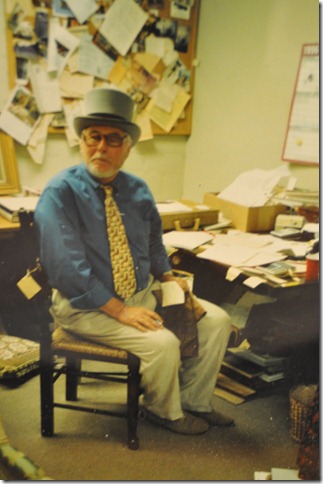 This framed photo of Brian Stringer with the caption “Our Fearless Leader” graced the showroom for years.
This framed photo of Brian Stringer with the caption “Our Fearless Leader” graced the showroom for years.
Who can blame them for wanting to close up shop? Brian Stringer started out in the antiques business over 40 years ago – all spent in the same location on West. Alabama. He’s been the trend setter here, others followed his lead and his hunches. In the beginning he imported mostly pine and oak pieces from England. Kathy estimates they have sold thousands of his famous dark oak Windsor chair. Trends dictate changes and the Stringers headed to Italy for mirrors and light fixtures. There, they discovered the gorgeous painted pieces that Brian Stringer Antiques became known for. Always ahead of the curve, Stringer was the first in Houston to import the Italian furniture. Later, continental furniture came from Spain and filled the shop. Still on top of their game even today, the shop has a large selection of the popular Swedish antiques.
The main showroom of Brian Stringer Antiques – the painted Italian console is the look the Stringers became famous for during the past decade.
As we continued to talk, Kathy reflected on the changes in the business. Though the Stringers have had an internet presence for five years, it has not been as beneficial as old fashioned advertising in magazines like Southern Accents and House Beautiful. Their beautifully photographed ads brought in profitable bicoastal business. When 1st Dibs came calling, Kathy found it too complicated to get involved with. Perhaps she knew where it was all heading. With the volatile Dollar and the terrible business climate here and overseas, the Stringers are just ready for a change. They don’t want to sell their business – they want to close the door and walk away. To this end, everything, and I mean everything, in the store is on sale at 40% off. Brian Stringer Antiques will stay open until the majority of the stock has sold. When it is all finished, whatever is left, they’ll either keep or put in storage. Then they’ll head for France to relax and we’ll be left to find new places to shop. Walking around the store for the last time – memories flooded through my mind of all the beautiful things I have bought here over the years and all the things I had wanted to buy! Mostly, there were times when I would stop in just to look at the antiques, and there were other times when I would come to rummage through the wonderful George Smith fabric samples, that they alone in Houston carried. I wonder who will buy the property, the valuable real estate their store sits on? Will the new owners also sell antiques? The change wouldn’t be as profound if they would just sell the business outright, along with the merchandise. At least it would still be here, albeit with different owners. Still, I think the Stringers made the right decision to just close their doors. No one but those two could ever run Brian Stringer Antiques.
DID YOU SAY 40 PERCENT OFF????????
Yes I did! Everything in the store is now 40 percent off! Forty Per Cent!!??!!! Everything!!!! It’s enough to make your head swim at the possibilities! If you are looking for that certain something – now’s your chance. And hurry! Forty percent off is awfully tempting to a lot of people.
 Brian Stringer Antiques is the place to go for wonderful antique and reproduction dining tables. Their chair selection is legendary.
Brian Stringer Antiques is the place to go for wonderful antique and reproduction dining tables. Their chair selection is legendary.
 There’s not much here I don’t want – the globe, the library ladder, the urn, the portraits, the mirror, the desk. Wrap it all up and move it to my house, please!
There’s not much here I don’t want – the globe, the library ladder, the urn, the portraits, the mirror, the desk. Wrap it all up and move it to my house, please!
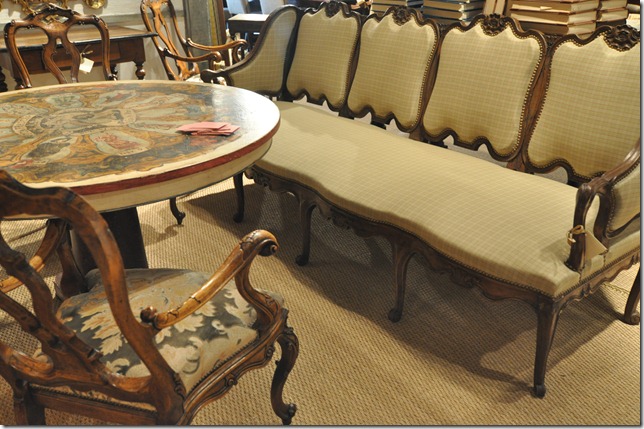 This settee drives me wild – if only I had the space for it! The Italian table with the painted finish became a signature look for Brian Stringer Antiques.
This settee drives me wild – if only I had the space for it! The Italian table with the painted finish became a signature look for Brian Stringer Antiques.
There is this remarkable Spanish leather screen from the 1690s - amazing. The leather sofa is the real deal.
There are several Swedish sofas in the shop, but that screen is catching my eye!
To die for!
 Look at how beautifully this French antique armoire is finished inside – it’s like two pieces of furniture in one!
Look at how beautifully this French antique armoire is finished inside – it’s like two pieces of furniture in one!
 The bust is fabulous, especially against these vivid colored walls.
The bust is fabulous, especially against these vivid colored walls.
 There’s more eye candy in the back showroom – these chairs are beyond fabulous!
There’s more eye candy in the back showroom – these chairs are beyond fabulous!
 I’m not sure if the cabinets are an exact pair – but at 40 percent off, who cares? (Open your screen all the way to see the entire picture.)
I’m not sure if the cabinets are an exact pair – but at 40 percent off, who cares? (Open your screen all the way to see the entire picture.)
I’m crazy about the sofa, though I would probably recover it and save the upholstery for pillows.
 Besides antiques, Brian Stringer Antiques carries a fine line of reproductions. Now is the time to buy a chair at these prices.
Besides antiques, Brian Stringer Antiques carries a fine line of reproductions. Now is the time to buy a chair at these prices.
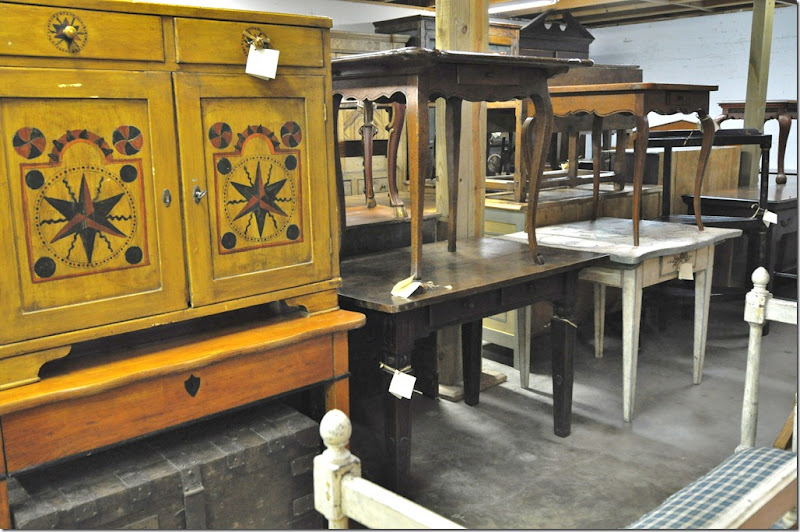 One of my favorite parts of the shop – the back storeroom where a million antique tables are stacked on top of each other. Notice the darling white table with the blue trim.
One of my favorite parts of the shop – the back storeroom where a million antique tables are stacked on top of each other. Notice the darling white table with the blue trim.
 This table, topped with the red George Smith toile, is just too cute.
This table, topped with the red George Smith toile, is just too cute.
This remarkable side table is made with a carved wood “tablecloth” covering it!
The side showroom always has the most wonderful antiques placed about.
An absolutely amazing centuries old tapestry – just waiting for it’s new home.
 Now that we’ve toured the main showroom, it’s time to go outside through the garage door and enter the French house, via it’s side door – got that?
Now that we’ve toured the main showroom, it’s time to go outside through the garage door and enter the French house, via it’s side door – got that?
The French house used to be stocked mainly with French provincial antiques. Now I notice there are a lot of Swedish antiques in here too.
The furniture in the French house is always less dressy. This is where I usually found what I was looking for.
 I love that painted cabinet – so pretty with the blue trim.
I love that painted cabinet – so pretty with the blue trim.

Yes!!!!!!
I don’t want to leave. I’m lingering around, stalling, wondering is this the last time I’ll be here? What will happen to this charming house?
Over the years, the Stringers absolutely charming house in Houston was published a few times – once in a local magazine and once in Southern Accents. A few years ago House Beautiful invited Patrick Dunne to go to France and visit the Stringers at their 14th century chateau with the romantic name: Commanderie de Sainte Antoine. Brian had bought the property without Kathy, though when she first saw its turret, she instantly understood what had attracted him. It was a man’s house totally, with thick stone walls and floors and an ancient studded front door. The house started out as a fortified hospital run by the Brothers of Saint Antoine, a band of monks, who set up hospitals to treat a mysterious skin disease that swept through Europe during the Middle Ages. After the French Revolution, parts of the chateau were left to fall into ruin, while other parts became the main house in the small isolated town. The Stringers have spent years renovating their place, but Kathy has left the interior decorating to Brian, worried she might make it all too pretty for him. The house is huge and one entire wing has spent the last century boarded off. Of course there is the turret - a tower room with sweeping views of the countryside. Now that the business is to be closed, the Stringers are looking forward to spending more time here where they are sure to be happy and content, sipping wine and eating cheese – and doing all the things that those in the French countryside do so perfectly.

 The exterior courtyard of the Stringer’s 14th century chateau.
The exterior courtyard of the Stringer’s 14th century chateau.
 The Stringers furnished the living room with large upholstered pieces brought from home and even more massive sconces and religious Santos. Notice the fabulous ceiling beams and the depth of the walls at the windows.
The Stringers furnished the living room with large upholstered pieces brought from home and even more massive sconces and religious Santos. Notice the fabulous ceiling beams and the depth of the walls at the windows.
 The amazing three story, winding staircase. No furniture could be brought up the stairs – it all had to be hauled through the windows using a pulley system. The staircase is so old and rare it is protected by the Historical Monuments of France Society.
The amazing three story, winding staircase. No furniture could be brought up the stairs – it all had to be hauled through the windows using a pulley system. The staircase is so old and rare it is protected by the Historical Monuments of France Society.
 The charming eat in kitchen with an old farm sink and terra cotta tiles. No overhead cabinets for sure, the baskets do double duty instead. Notice the overhead pinlights that are strung on wire in the kitchen. Kathy designed this space – installing it on the second floor to be near the shaded loggia outside the kitchen’s door.
The charming eat in kitchen with an old farm sink and terra cotta tiles. No overhead cabinets for sure, the baskets do double duty instead. Notice the overhead pinlights that are strung on wire in the kitchen. Kathy designed this space – installing it on the second floor to be near the shaded loggia outside the kitchen’s door.
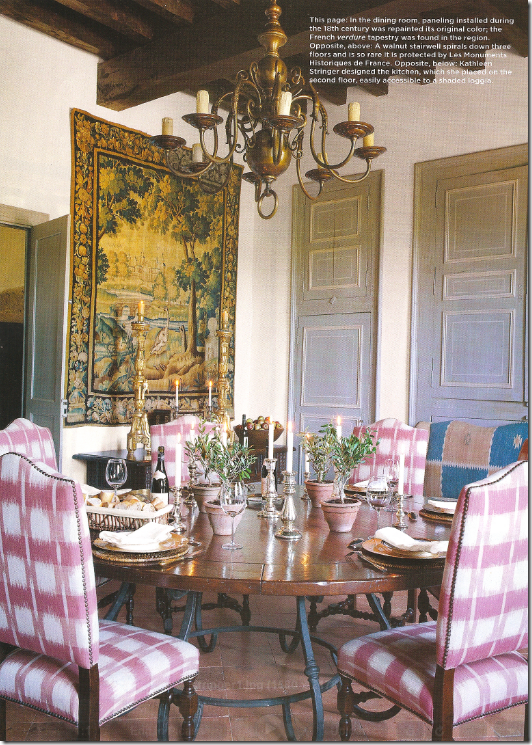 In the dining room with 18th century paneling – the Stringers repainted it in its original color. The tapestry was bought at a nearby market. The table with its iron base and wooden top surrounded by tall chairs is typical of what Brian Stringers Antiques sold for years and years: their tables and chairs were some of their most popular items. The Stringers plan to spend more time here when the business is closed. Kathy knows Brian will be happy here – the chateau is a life long dream of his, something she instantly recognized when she first saw it.
In the dining room with 18th century paneling – the Stringers repainted it in its original color. The tapestry was bought at a nearby market. The table with its iron base and wooden top surrounded by tall chairs is typical of what Brian Stringers Antiques sold for years and years: their tables and chairs were some of their most popular items. The Stringers plan to spend more time here when the business is closed. Kathy knows Brian will be happy here – the chateau is a life long dream of his, something she instantly recognized when she first saw it.
Brian Stringer Antiques is located at 2031 West Alabama in Houston. For current hours, please call 713-526-7380.
The West Alabama Corridor:
If you plan to visit to take advantage of the 40 percent off sale and want to make a day of shopping in the area, be sure to also stop in at Ginger Barber’s Sitting Room which is next door. Further up the street is Tara Shaw and Heather Bowen Antiques. Continue up W. Alabama to Antiques and Interiors on Dunlavy, Boxwood and The Country Gentleman, then hit up Foxglove and Alcon Lighting.
If you haven’t passed out from exhaustion yet, turn around and head back to Brian Stringer’s and go the other way on W. Alabama. Stop at Jane Moore’s, then at Ferndale, go to Brown, Bill Gardner, Made in France, and Objects Lost and Found. Back on W. Alabama, continue on to Thompson and Hansen, The Gray Door, Chateau Domingue, Indulge on Saint Street, and 2620 on Joanel. Hungry? Go to Tiny Boxwoods. I won’t even tell you what you are missing a street up on Westheimer! Enjoy!!
Reminder: Alessandra Branca is now on The Skirted Roundtable HERE.
Post Title
→The End of An Era At 40% Off!
Post URL
→https://porobligacin.blogspot.com/2009/11/end-of-era-at-40-off.html
Visit PoR oBliGaCióN for Daily Updated Wedding Dresses Collection




